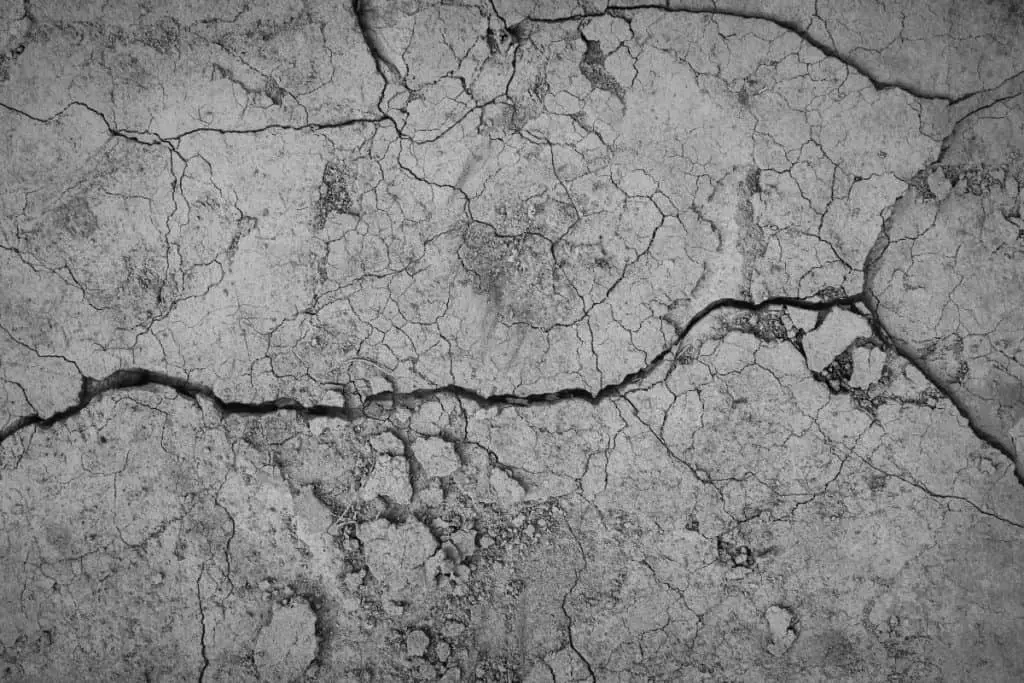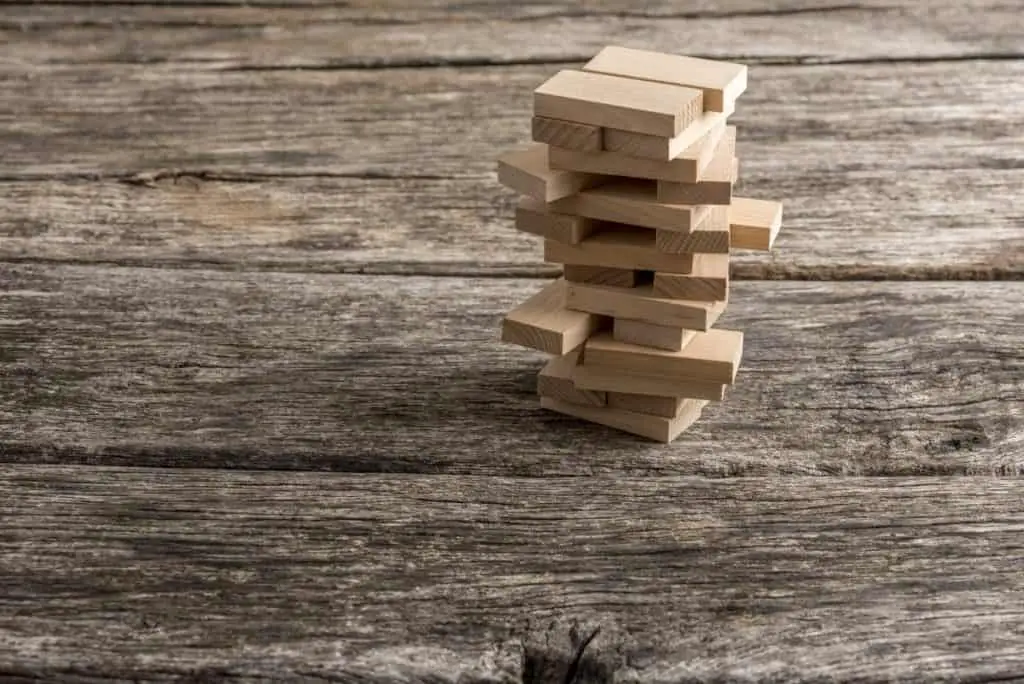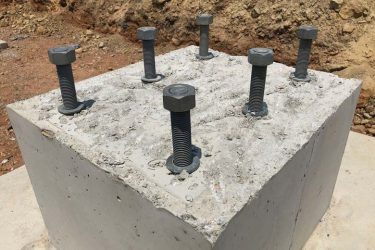It can be expensive and labor-intensive to replace old, damaged concrete entirely. You would think it would be more convenient to just pour new concrete right over the old damaged slab.
Pouring new concrete over old damaged concrete will do more harm than good, as any damage that was on the lower layer before will transfer up to the new slab. When it is necessary to pour over an old slab, it is important to repair any and all damage before beginning the project.
That stinks, but the problem remains. By pouring over the damaged slab, you only move the problem a few days into the future.
In fact, most contractors I’ve spoken with won’t even pour over a damaged surface, since it wouldn’t even have a lasting effect. What options are there to fix this problem then?

Table of Contents
Why Will Old Damage Shift To The New Layer
Concrete doesn’t usually bond with dry concrete very well. This can be a big problem if your slab is meant to bear a heavy load, like a car or a house.
Because of this, part of pouring a new layer of concrete is often using a bonding agent to make sure the new layer sticks to the old.
Unfortunately, this bonding process does influence the shape of the new layer. This means that if the old slab has structural issues, those issues will be seen in the shape of the new slab as well.
This is especially visible when it comes to cracks, where it will only take a few days for the old cracks to push through to the new surface.
Why Use A Bonding Agent?
It’s all about structural strength. If your old layer of concrete is structurally sound, then once you’ve done all the necessary repairs on your surface you’ll want to keep hold of that structural strength.
The only way to do that is to make sure that the new layer bonds with the old.
Because the new layer will likely not be more than 2 inches, and because the old layer will be it’s only foundation, that new layer will probably not have the structural strength you require unless you bond it to the old.
This all being said, some surfaces will be fine even if they aren’t bonded to their old layers.
For instance, decorative surfaces that don’t often carry loads will probably be fine a long as the lower layer is structurally sound and the cracks in the surface aren’t too serious.
In this case, you’ll want to use an unbonding agent to make sure that the new layer doesn’t bond with the old one. This will ensure that old damage won’t transfer up through the new layer.
If you don’t want to use a chemical unbonder, you can add a new foundation of gravel or sand over top the old slab for a similar affect
While this certainly makes pouring a new layer a much bigger hassle, if your floor is still structurally sound this is still probably a great option.
Repairing Old Concrete
So your driveway or sidewalk are getting old and sustaining damage. If you want to pour concrete over them, you’ll need to fix them before you pour, or all that damage will transfer up.
If you can repair your old slab, it actually should be safe to pour over. However, repairing an old slab of concrete can be time and labor intensive. Here’s what needs to be done before you can put a new layer on top of your old slab.
- Make sure your concrete is structurally sound. If it isn’t sound, then replacing it is the only safe option.
- Carefully clean the surface. If you’re going to go through with resurfacing, the surface of the concrete will need to be squeeky clean, since any little object could have unexpected consequences on the pour.
- Repair any cracks that you can find. This can be a process in and of itself. For help with this, just keep reading.
- Try to figure out the reason your concrete cracked and fix that. If you haven’t fixed the root issue, it’ll just happen again.
- Make sure that there’s space to add an extra two inches of concrete to your surface. Especially when it comes to driveways, patios, and basements, you want to make sure that any doors they may connect to are high enough off the floor to still be of use after the new layer is added.
- Add a metal overlay to help the new concrete stay structurally strong.
- If you’re only worried about a few cracks, you can use an unbonding agent to help the new layer to not bond with the old. This will prevent the cracks from reflecting onto the new surface. (This is a good option for patios and other projects that are unlikely to support heavy loads).
If you can do all of these things, then great! Do them, and then you can go ahead and pour a new layer.
What If The Concrete Isn’t Structurally Sound?
That’s a big problem. If the lower layer of concrete isn’t sound, then pouring new concrete over it will cause more problems than it’s worth. It’s liable to crack even more than it’s already cracking, and it could even potentially collapse in on itself if its foundation is bad.

If your concrete has a bad structure, the easiest thing will probably be to just replace it.
While a professional may be able to restructure it, it really probably isn’t worth doing when you could just replace the whole thing with a whole new slab that doesn’t have those same problems.
It’s the same thing if the cracks in your concrete are too big to fix. The slab at that point is just too badly damaged for a new pour to be of any help at all.
How Do I Replace My Badly Damaged Concrete?
Removing the concrete is a simple enough task. You’ll need a jackhammer and enough trash bags to carry a literal ton of rocks.
You’ll need to clean out the space very thoroughly, as having any of the old concrete left over in the area could potentially cause problems later down the line.
When pouring the new concrete in, you’ll go through the same process you did to put the concrete in the first time.
You’ll want to put down a gravel foundation and a new form, paying special attention to the water drainage in the area (as that may be the reason that your old slab received damage.)
With that done the pour can go on as usual, and your new slab should be able to do its job just fine.
Resurfacing An Old Slab
In some cases though, you may not even need a whole new layer of concrete. You may be able to fix up your slab just by resurfacing it!
It’ll take a lot of work, but it can be done, and it is probably the easiest out of the three options I’m aware of.
Resurfacing starts with thoroughly cleaning the affected surface, most likely with a high PSI power washer.
This is necessary, as the next step will include sanding any imperfection in the concrete down until they’re a bit more manageable to deal with. Here’s a detailed step-by-step process as performed by a professional.
If this can work for your concrete surface, then you should do it! When it’s finished, it should only take about 24 hours before your slab is once again fully functional and able to sustain vehicle traffic.
We have written a more in-depth guide on how to resurface a concrete driveway, which might help you out if you plan to do it yourself.
Making Sure Your Newly Fixed Surface Never Cracks Again
I can’t guarantee that your slab will never crack again. There are all sorts of circumstances we can never control that are involved in determining whether your concrete is likely to sustain damage or not.
However, there are a few ways we can minimize the risks that potential damage can pose:
Clean and reseal it. This is especially important if your slab is outside. Keeping it clean and re-applying the sealant once every two years will greatly improve the lifespan of any outdoor concrete fixture.
Avoid using strong chemicals. It can be very important to use de-icers in the winter, especially for driveways. However, these chemicals can cause a lot of damage to concrete.
More natural methods like rock salt or calcium chloride will do less damage but also can hurt vegetation near the driveway. Make sure to take circumstances into account when deciding how best to device your driveway.
Just be careful. You probably shouldn’t drive a Uhaul over your patio, or try to fit one in your basement, or even park one on your driveway. Most concrete that has been layed in private residences isn’t necessarily prepared for everything that could possibly happen.
While concrete is remarkably sturdy, it’s still possible to overwork it if you’re frequently putting loads on it that are heavier than its intentional loads. Treat your concrete nicely, and it should last for a very long time.
Also read: Average Driveway Lifespan: (With 15 real examples)



